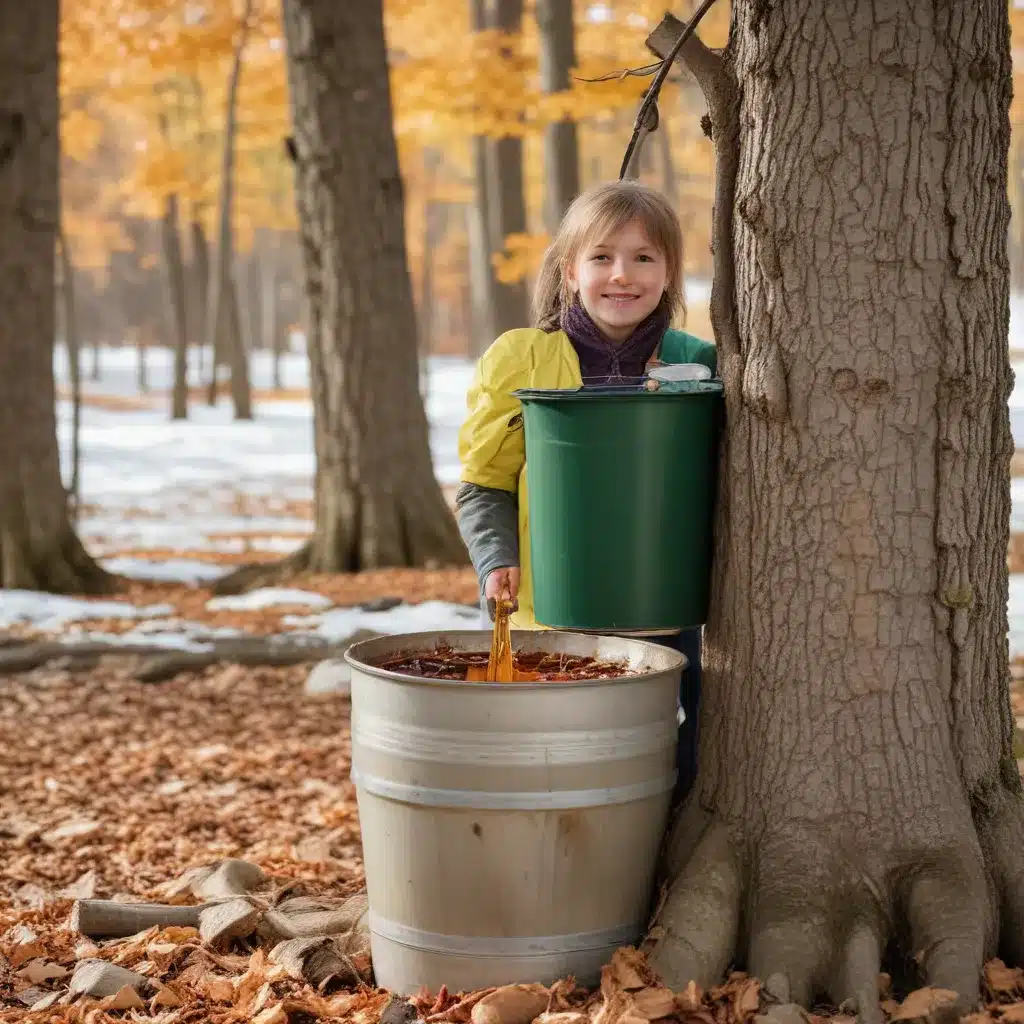
As the crisp winter air gives way to the first hints of spring, a captivating process unfolds at Crooked Pines Farm. The maple trees, long dormant, suddenly come alive as their sap begins to flow, signaling the start of the annual maple sugaring season.
The Maple Tree’s Vital Function
Maple trees, members of the Acer genus, are renowned for their vibrant foliage and their ability to produce a sweet, amber-hued sap. This sap serves a vital function for the tree, acting as a vital life-sustaining fluid that transports nutrients and water from the roots to the branches and leaves.
The anatomy and physiology of the maple tree is finely tuned to this important task. Throughout the year, the tree’s roots absorb water and minerals from the soil, which then travel up the trunk and into the branches. During the spring and summer months, the leaves use sunlight, carbon dioxide, and water to produce glucose, the primary energy source for the tree, through the process of photosynthesis. This glucose-rich sap then circulates back down the tree, nourishing the roots and enabling the tree’s growth.
However, as the days grow shorter and the temperatures begin to drop in the fall, the maple tree’s sap flow slows to a trickle. The tree enters a dormant state, conserving its resources until the cycle begins anew the following spring. It is during this brief window between winter and spring that the maple sugaring season occurs, when the sap flow is at its peak and can be harvested for human consumption.
The Sap Extraction Process
The process of maple sugaring, or maple syrup production, begins with the careful tapping of the maple tree. Skilled farmers and sugar makers use specialized equipment to drill small holes, known as tap holes, into the trunk of the tree. These holes allow the sap to be collected and channeled into buckets or tubing systems.
The timing of the tapping is critical, as it must be done when the sap is actively flowing. This typically occurs when daytime temperatures rise above freezing, usually in late winter or early spring, and the nights remain cool. The sap flow is driven by the difference in pressure between the tree’s roots and its branches, with the warm daytime temperatures causing the sap to rise, and the cool nighttime temperatures causing it to descend.
Once the tap holes have been drilled, the sap is collected and transported to a central processing area. In traditional methods, the sap is gathered by hand, with farmers lugging buckets from tree to tree. More modern operations utilize intricate tubing systems that channel the sap directly from the trees to a central collection point, improving efficiency and reducing labor.
The Art of Boiling Maple Sap
The true magic of maple sugaring happens in the evaporation process. The sap, which initially has a water content of around 97-98%, must be boiled down to concentrate the natural sugars and other compounds, transforming it into the thick, syrupy maple syrup we know and love.
This process requires careful attention and skill. The sap is carefully monitored and boiled in specialized evaporator pans, with the temperature and evaporation rate closely controlled to achieve the perfect maple syrup consistency. As the water content is reduced, the natural sugars and flavors become more concentrated, resulting in the rich, caramelized flavor that distinguishes pure maple syrup from its artificial counterparts.
The boiling process is not without its challenges, however. Too much heat can scorch the syrup, imparting undesirable burnt or bitter notes, while insufficient heat can result in a thin, watery product. Experienced maple syrup producers have honed their craft over generations, carefully balancing the temperature, airflow, and other environmental factors to produce the finest quality syrup.
The Diverse Uses of Maple Syrup
The final product of this labor-intensive process is a treasure trove of culinary and health benefits. Maple syrup is prized for its versatility in the kitchen, serving as a natural sweetener in a wide range of dishes, from breakfast staples like pancakes and waffles to savory recipes like glazed carrots or roasted meats.
Beyond its culinary applications, maple syrup also boasts impressive medicinal and health benefits. Rich in antioxidants and containing small amounts of essential minerals like zinc, calcium, and potassium, maple syrup has been studied for its potential to support immune function, reduce inflammation, and even improve cognitive performance.
The unique flavor profile of maple syrup has also led to its widespread use in artisanal products, from gourmet ice creams and confections to specialty body care items and home goods. Maple-infused candles, soaps, and even maple-scented perfumes allow the essence of this natural wonder to be experienced in a variety of ways.
As the maple sugaring season unfolds at Crooked Pines Farm, visitors can witness the centuries-old tradition of tapping trees and transforming sap into liquid gold. Through hands-on demonstrations and educational tours, guests can gain a deeper appreciation for the sweet science behind this age-old practice, and the vital role that maple trees play in both the natural and human worlds.
Whether you’re a seasoned maple enthusiast or simply curious about the process, a visit to Crooked Pines Farm during the maple sugaring season is a truly special experience, one that celebrates the natural bounty of the land and the ingenuity of those who have harnessed its sweet potential for generations. So come, join us, and discover the magic of maple sugaring for yourself.


